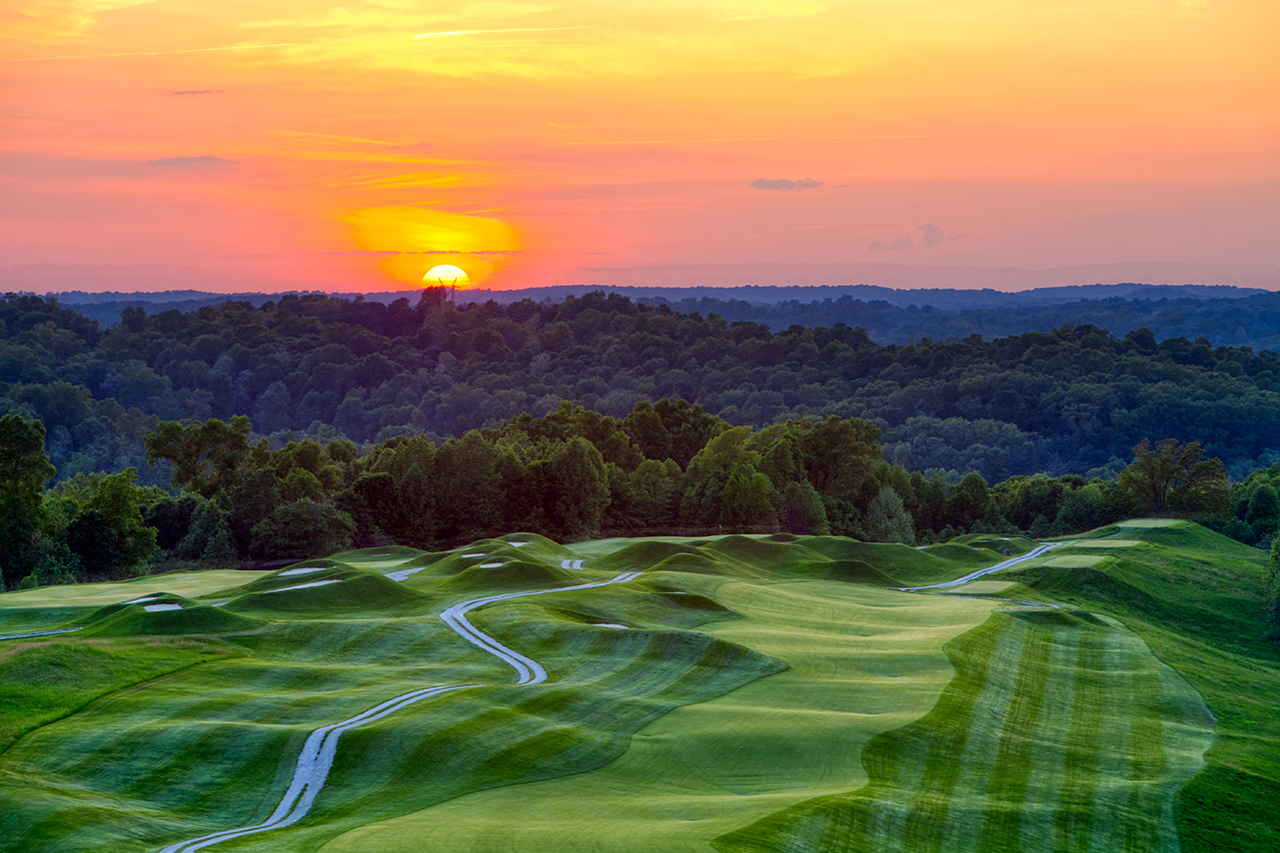FRENCH LICK, Ind. – Architect Pete Dye was notorious for the aesthetic features of many of his golf holes, with designs that not only play tough but often look terrifying for golfers standing on a tee or fairway.
Island greens. Deep traps. Water. Blind shots. Steep pot bunkers. Trees directly in the line of play. The visuals knock your socks off, from TPC Sawgrass to Kiawah Island to Whistling Straits and beyond. If there wasn’t enough challenge in the land, Dye wasn’t shy about moving tons of earth to fit his imagination and his desire to challenge top players with every shot.
It’s no different at his namesake course at French Lick Resort. Only here, in a beautifully bucolic stretch of southern Indiana, Dye didn’t have to move earth to make golf harder. He had to flatten part of a mountain just to make golf possible at all on one of the highest points in the Hoosier State.
The end result: One of the most visually stunning inland course in the United States. And at 8,100 yards from the tips, it’s also one of the longest, not that any resort golfer has any business on those back tees – the layout has hosted plenty of elite amateur and professional events, but we mortals must be willing to move up.
 The Pete Dye Course at French Lick Resort (Courtesy of French Lick Resort)
The Pete Dye Course at French Lick Resort (Courtesy of French Lick Resort)
Funny thing is, at first Dye didn’t even want to try to build a course atop Mount Airie. The site was just too steep, the engineering too daunting. He initially turned down a request to build made by Steve Ferguson, chairman of the Cook Group, which owns the resort.
“I remember telling Mr. Ferguson I didn’t think I could build a golf course up here, but it was a great site here of course, one of the highest points in Indiana,” Dye, who died in 2020 at the age of 94, said in a video shot for the resort recalling the origins of the course. “It had a lot of roll, up and down, and I was trying to figure out how you could make it so someone could walk this golf course.”
Dye changed his mind several days later though, and he laid out an initial routing on a napkin still displayed at the course. After three years of construction and more than 150 site visits by Dye – who lived for years in Indianapolis, hometown of his wife, Alice – the course officially opened in 2009. It has since become the No. 1 layout in the state on Golfweek’s Best ranking of public-access courses, and it ties for No. 140 among all modern courses built in the U.S. since 1960. It also ranks No. 3 among all courses operated by or in conjunction with casinos in the U.S.

